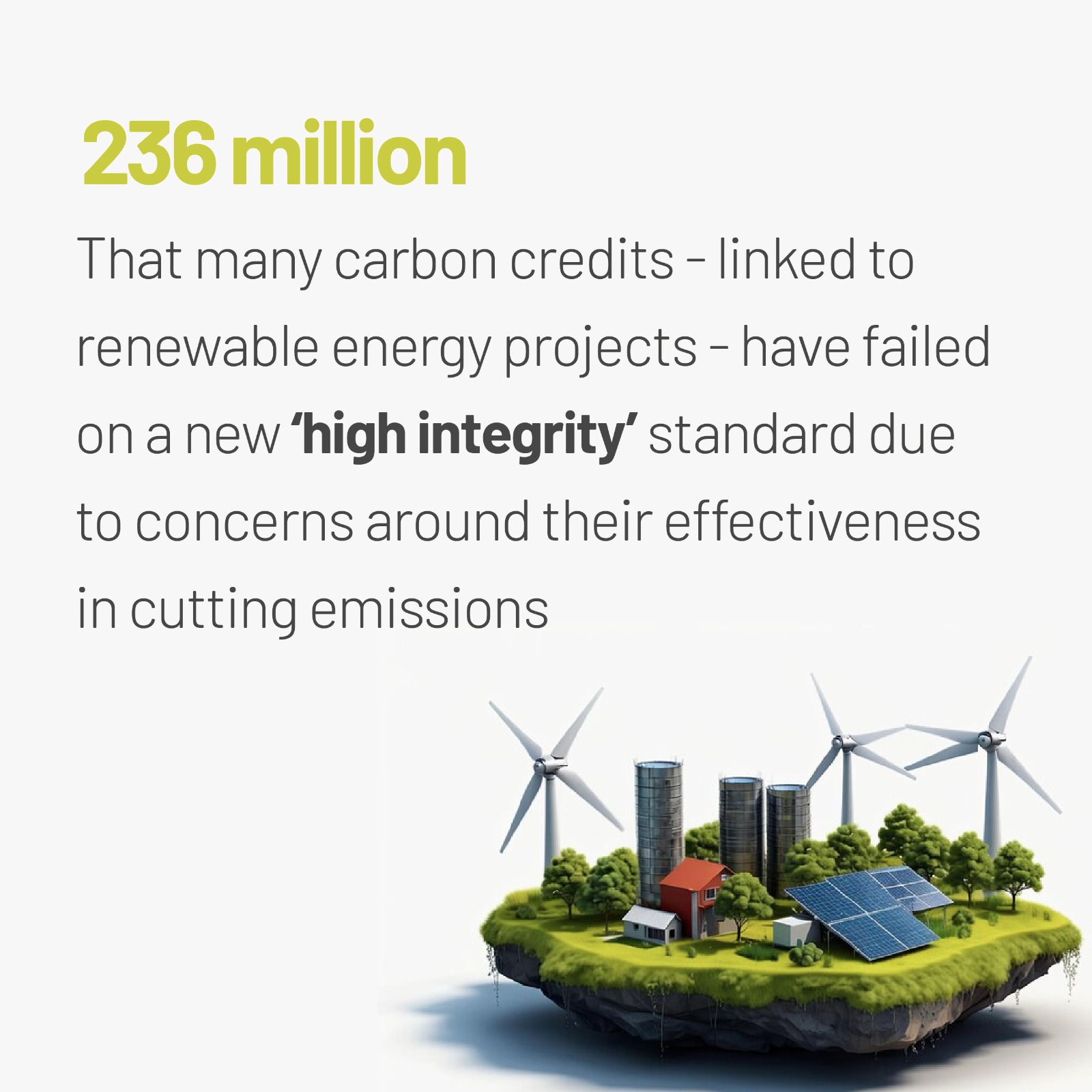A corporate emissions watchdog’s recent report saying the use of carbon offsets was ‘largely ineffective’ could lead major companies to scale back or even abandon their net-zero goals, carbon industry executives say.
Companies generally buy offsets generated by projects that aim to remove or absorb emissions from the atmosphere.
But their use of offsets needs to be validated by governance authorities, without which their carbon footprint calculations remain unchanged.
Also on AF: China to Extend Loan Programme For Companies to Cut Emissions
“There are a lot of companies out there going, ‘we can’t deliver against our targets. We have two options. We look for another way of doing it or we quietly leave the building’,” Tommy Ricketts, CEO of carbon-ratings agency BeZero Carbon said.
Effectively, some companies are likely considering paring back their net-zero ambitions if they are not allowed to use carbon offsets more widely, Ricketts added, declining to name specific companies.
Why do companies use offsets?
Since the 2015 Paris Agreement, when governments set a 1.5 degrees Celsius global warming threshold, more than half of the world’s largest 2,000 publicly-listed companies have announced targets to cut their emissions to zero on a net basis by 2050.
But research indicates that a majority of companies have committed to reducing far fewer emissions than required.
In April, a study by the non-profit NewClimate Institute and Carbon Market Watch found that some of the world’s biggest companies had committed to reducing their emissions by an average of 30% by 2030, when the required amount was 43%.
At the same time, the increasing use of artificial intelligence — and effectively, data centres — has meant that big tech companies like Google and Microsoft are instead seeing a jump in their carbon emissions.
Companies say a major impediment to their net-zero goals is the slower roll-out of clean technologies and a lack of government policies to support the transition away from fossil fuels.
Proponents say that in such a scenario, carbon offsets can help companies meet their targets when efforts to slash their emissions fall short.
Companies can buy carbon credits from or invest in projects such as biochar kilns, wind farms and reforestation schemes to offset their emissions by moving money to climate-friendly projects.
Such offsets can come in particularly handy when it comes to companies’ supply-chain emissions, referred to as Scope 3. They make up the largest part of a company’s carbon footprint and are hard to slash, because companies often do not have control or influence over vendors and customers.
View this post on Instagram
What’s stopping them now?
Critics argue that greater use of offsets will result in companies doing less to reduce their own emissions. There is also worry about the quality of many offsets on the market.
Amid those concerns, the world’s leading corporate emissions watchdog dealt a blow last month to companies’ plans to use offsets to manage their carbon footprint.
In a research paper, the Science-Based Targets initiative (SBTi) said climate benefits from the use of offsets cannot always be verified.
It further backtracked on an earlier plan to allow companies to expand their use of offsets to meet their climate goals. The group currently allows companies to use offsets only after their targets have been met by directly reducing their emissions.
The SBTi said it would defer to 2025 its final decision on allowing companies to use offsets to meet emissions targets.
The move created significant uncertainty around the carbon offsets market as the SBTi is the largest independent, third-party validator of corporate net-zero plans.
The group is considered by many to be the gold standard given its focus on ensuring any strategy aligns with climate science.
Nearly 6,000 companies use the SBTi to validate emission targets. More than 2,000 companies have committed to getting their targets validated going forward.

What does this mean for the offsets market?
An SBTi survey of companies published this year suggested cutting emissions from a company’s supply chain was the biggest barrier to setting a net-zero plan.
John Lang, who tracks net-zero goals for research group the Energy & Climate Intelligence Unit said that, as a result of the SBTi’s stance on carbon offsets, he expected more companies will pare back their near-term emission targets. They may, however, focus more on realistic actions to cut emissions, he said.
“Recalibrating targets doesn’t necessarily mean regressing on ambition.”
Thomas Day, an analyst at non-profit climate research group NewClimate Institute, said companies that are scaling back their efforts are often just abandoning unsubstantiated “lofty-sounding ambitions”.
Broader use of carbon offsets could expand the market to $100 billion a year by 2030 from $723 million last year, according to carbon-offset broker, project developer and consultant South Pole.
Furthermore, projects that generate carbon offsets — such as carbon dioxide removal (CDR) programmes — require an influx of funds to scale up their work as their infrastructure requirements can be significant and expensive.
But the lack of near-term clarity on validation could lead to carbon offset volumes stagnating, South Pole CEO Daniel Klier said.
“The fact [SBTi officials] say we may get some clarity in 2025 is a major problem, because that means there’s probably a year without investment in nature and carbon removals. Nobody will do anything until they have guidelines,” Klier said.
- Reuters, with additional editing by Vishakha Saxena
Also read:
A Third of Carbon Credits Fail on New ‘High-Integrity’ Criteria
Bill Gates Backs Effort to Boost Credibility of Carbon Removal
Carbon Removal Could Rake in $100 Billion Annually From 2030
A European Push Could Help India Fill Carbon Removal Gaps
Methane Emissions Surge, Fuelling Climate Fears – Guardian
China, India Ask Rich Nations For ‘Trillions’ in Climate Finance
Zero-Carbon Breakthrough For Industry’s Dirty Businesses – NA
China Turns to Carbon Capture, Biomass For Coal Power Emissions
Memory Breakthrough Could Slash AI Energy Use – LS
Microsoft in Mega Carbon Deal as AI Power Demands Surge – FT
























